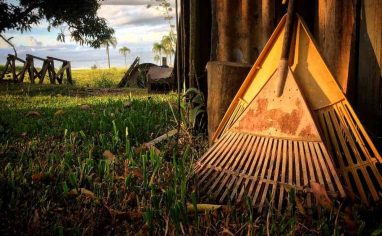
Subscribe To The Open Sanctuary Podcast
If you’d like to get the latest episodes of The Open Sanctuary Podcast, you can subscribe for free on all Podcast platforms, including Apple Podcasts and Spotify!
Episode Notes
In this episode of The Open Sanctuary Podcast, Senior Advisor Tara and NonprofitA non-governmental organization whose primary purpose is something other than selling goods or services. Specialist Julia discuss the ins and outs of an essential sanctuary consideration: resident drinking water! Ensuring your residents receive the nutrients they require for their health and well-being is an essential aspect of animal care, but the importance of water and the logistics around providing it are sometimes overlooked. To learn about the nuances of drinking water considerations, including water testing, how to choose the best containers, and the potential impacts of weather, tune in!
—
This Episode’s Referenced Open Sanctuary Project Resources:
- Resident Drinking Water Considerations At Your Animal Sanctuary | The Open Sanctuary Project
- Daily Diet, Supplements And Treats Resources By Species | The Open Sanctuary Project
Episode Transcript (Auto-GeneratedThe following content was transcribed through an automated process and may contain transcription errors or misspellings.)
Julia Magnus: Welcome to another episode of the Open Sanctuary Podcast. I am Julia, the nonprofit specialist here at the Open Sanctuary Project and I am joined by Tara, our senior advisor. Today we are going to talk about drinking water. Now, for anyone who is wondering what is there to talk about, just give them water. There is actually much more to it. Making sure our residents have access to water is essential, but it is not just about putting out a bowl or a tub of water and just calling it a day. There are important steps that folks need to take to ensure the water their residents have access to is safe, clean, palatable, and easily accessible. So, Tara, how do we do that?
Tara Hess: Drinking water. It seems like such a simple thing, and yet it is not always. I actually remember when I was asked to write the resource that this podcast is inspired by. And the reason I remember it is because I distinctly remember being sort of like, “Does that need to be one resource?” We talk about water in all the diet resources. But then when I really started to think about it and I started to lay out the resource and do research, it is like, well, yeah, there is actually a lot to say about drinking water and there is a lot that goes into it that some folks just might not be aware of, or they are going to be aware of after they figure it out the hard way, which is not the way that we want folks to have to figure things out. So, yeah, like you already said, I think when most folks think about drinking water, it seems simple. What immediately comes to mind is maybe, make sure they have continuous access to water and clean it regularly. But there is definitely more to it than just that.
Julia Magnus: Yeah. And in your resource, you make it clear that even those things, making sure that they have continuous access and regular cleaning, is not necessarily as simple as it may sound.
Tara Hess: Yeah, that is true. Like so many things in the sanctuary world, it is not as simple as it sounds. So, our recommendation is to clean water containers. And I should just say like I am going to say containers because I feel like saying bowls, buckets, troughs, listing them all is sort of cumbersome. I do not know that container is the right word. That is what we went with in the resource. So container is like anything you are going to put water in for residents to drink from. That thing, whatever it is, needs to be cleaned at least once a day and filled with new water. But just dumping out the old water and filling it back up with fresh is not going to cut it. Because as organic matter is introduced to the water, which is going to happen from your resident’s saliva or if food or plant matter or feces, which sounds gross, but is such a thing, especially for certain species. If any of that winds up in there, it is going to become a breeding ground for microorganisms like bacteria and algae. And some of those organisms are detrimental to your resident’s health. So, that is a problem. But, even those that are not going to make them sick directly could affect the smell, taste, or the appearance of the water. And that could make it less appealing to the individuals who are trying to drink. And if it is less appealing, they are going to drink less. And if they drink less, then they could run into problems such as dehydration, but also other issues that are going to vary by species, like with equines. If they are not drinking enough water, you could wind up with someone dealing with colic or with small ruminants you could end up dealing with urinary calculi. So making sure that the water is clean and something they want to drink is important. And then in terms of making sure the residents have continuous access to water after you have provided it, that is not always straightforward either. So even if the amount of water you are providing your residents, even if you know that that is more than enough to get them through until the next time you are going to change or top off the water, you really need to be checking the water regularly throughout the day because there are just so many things that can happen that are going to result in your residents not having water despite the fact that they should. You know, there are just so many times where it is like it should be fine and then the reality is it is not. So like if you are putting out bowls or buckets, those can spill and that might be super likely depending on who you are caring for. There are gravity-fed setups which if they get a little knock and now all of a sudden they are not leveled. All that water is just going to flow right out. Now it is empty despite potentially holding more than enough than they need. If you have a unit that refills automatically, those can malfunction. I have also had times where caregivers are so busy and doing so many things like human error is a thing that we all have to just realize happens and sort of build in mechanisms to catch those things and address them. So, I have done it myself where I clean out an auto water that you have to turn off the water to clean it and you forget to turn it back on or there is an auto water that is hooked up to a hose somewhere else and someone turns that off not realizing that it is supposed to be on all the time because it is feeding some sort of water float or something like that. So, it is really important that you are not just relying on the fact that you have given them enough water. You also have to check and make sure that nothing has gone wrong with the equation to make it that they have no water. And then if you are in an area where temperatures dip below freezing, you have an added challenge because if you are not using a heating device or if you are using a heating device and it fails, that water could freeze. And actually, even if the water does not freeze for some individuals, some species are more prone to this, but you could also have individuals who just have their unique things. But some residents are not going to want to drink water that is super, super cold even if it is not technically frozen and they technically can drink. And so then we are back to what I already mentioned where now you have reduced water consumption and that could lead to various health issues. So in the winter in order to ensure continuous access to water they actually want to drink and can drink because it is not frozen. You might find you have to go swap out the water regularly in order to make it accessible and appealing.
Julia Magnus: Yeah, that makes a lot of sense. So, what about another topic? Let us go to the source that you discuss in your resource, which is water testing. So, for some folks, this may seem obvious, but you know, some folks have never thought about it. Could you talk a little bit about what water testing is, what it can tell us, and why it is important?
Tara Hess: Yeah. So, after researching this topic, I realized that water testing is definitely key and it is also definitely something that I overlooked in my own caregiving. I knew that water testing was important if I had a concern, but in terms of regular water testing I was not really thinking about how if everything seemed fine you still should be testing water regularly and in terms of water testing and how often you do it and what you might be worried about some of it is going to differ depending on your water source. So, my personal experiences with well water and doing the research for this resource, most of the information was about well water and spring-fed water. And if you have either of these water sources as the source for your resident’s drinking water, you really should be testing the water at least once a year. That is the general recommendation. But you also want to test your water if you notice things like changes in color, odor, clarity, or taste; if residents are displaying signs of concern that could be related to a water issue. And some of that might come up through conversations with your veterinarian or you want to test your water if there has been flooding near the water supply because that can cause an issue and cause changes in the water quality. And in terms of what water testing can tell you, it can give you important information about things like pH, total dissolved solids, and hardness, and can also alert you to the presence of excess minerals, nitrates, toxic compounds, or biological contaminants. And I do want to say I am as far from a water testing expert as one could be, but I do know that it is complicated. And so folks, this is not something that folks should test their water and then just be like, “I will look at the report and figure it out.” It is really something you want to connect with your veterinarian about. There might be times that they want you to connect with a water testing expert, but I definitely think your veterinarian should be involved in terms of interpreting the results again because it is complicated. And we talk about this a bit in the resource, but in addition to just generally being complicated for some species, there is just not a ton of information out there in terms of what is safe versus what is not safe. So that is another challenge that folks have to deal with and your vet can help you deal with. But even when you do know that, let us say there is an essential mineral that, yes, this species needs some of it, but above a certain level can cause toxicity issues. When you are doing water testing, your veterinarian will look at how much of that mineral is in the water, but they are likely getting the mineral from other sources like their food or if they are also getting other supplements. And so, it is really about looking at the bigger picture and making sure in total that mineral level is falling within the normal range because the water might be in the normal range. But if they are also getting it here, here, and here, now you could have a problem. Ultimately, water testing can clue you into safety issues like I just mentioned, but also palatability issues, which again, it might not seem like as big of a deal as something that is outright harmful, but you really need that water to be palatable. And some species are super, super, super sensitive to palatability issues and things like odor that comes with the water. I know from when I was researching this resource that you are on municipal water and had to do water testing and maybe had some issues. So, do you want to talk about that?
Julia Magnus: Yeah, I feel like theoretically folks on city water might assume water is safe. We are on city water in Chicago, but keep in mind in this country we have seen a lot of shocking situations about water quality in cities at times. And we did have a scare here. I mean, sometimes our water changes may be for the better and that is alarming, but we did actually have a scare with a resident here when we discovered that one of our parrots had high lead and zinc levels that was making her sick. So, at that point, we started testing everything. Everything in the house, including our water. We got a kit that was recommended by our veterinarian. We took pictures, just sent them the results so they could see them. The water was not the ultimate cause. The levels were not elevated to alarming levels, but we were kind of on high alert at that point. So, we ultimately decided that we were going to install a whole house water filter. So, it just filters all water coming into the house at the very source. So, every drop of water in this house from the hoses outside to the showers and even the toilets, they go through that filter. So, after we installed that, we tested again. We found that all of the levels, even though they were not alarming to begin with, they all went down. And the taste of the water was significantly better. And I know that palatability is an important factor. So, that was a major bonus to installing that. I also just kind of want to mention we also tested water fixtures like faucets and our hoses just to make sure there was nothing about them that was contributing toxins to our water. So, to that point, it is not just the water itself that matters. Why do not we talk a little bit about your containers? It matters what containers you use and that is going to vary by species, even by individual. There are some general considerations, however, you will want to follow when it comes to water containers. Do you want to dive into that a bit?
Tara Hess: Yeah. I feel like it is such a potentially boring topic, but I could talk about water containers all day. I will not because I want people to keep listening to the podcast going moving forward. But it is such a simple thing, but I could nerd out and do a three-hour presentation on containers for chickens, like water containers for chickens, and then I will do a different one for pigs. But yeah, there is a lot to think about. So, obviously, there are a ton of different options that come in a range of sizes, and who you are caring for is going to have a real impact on how big of a container you want. There are small bowls, there are bigger like five gallon bowls, there are different size buckets and then you could get into something as big as a big water trough or tank that is 100 gallons, 300 gallons or more. Obviously you are not going to put that out for like a flock of chickens because that is a little ridiculous and also potentially unsafe, which we will talk about. But you have all those options in terms of just like the size and shape and everything. And then there are also different options in terms of some things can be filled manually, some things just by default refill automatically, and then you have these other things that can be hooked up if you want to to some sort of device that is going to refill it automatically. And as you mentioned, what works for one species or even one specific group or individual may not work for another. And I encourage folks to check out our species-specific daily diet resources. It is a whole, we have one per species. We will link to those in the show notes, but that can give you a better idea of some of the potential challenges that you need to be aware of when choosing what you are going to put drinking water in and how you are going to provide it. And those also provide some tips because some species it can be really challenging. Like I feel like with pigs, it can be really hard to find the right thing to put water in because of some of the unique challenges that come with them. But there are also some general things to keep in mind regardless of the species that you are caring for. So we will just focus on that for now and then folks can check out those other resources. The first one probably seems obvious, but you need to make sure that everyone can easily drink from the container that you provide.
Tara Hess: But the catch is that if it is not something that is going to refill automatically and maintain a relatively stable water level, you need to think about how that water level dropping is going to affect someone’s ability to reach that water. So if you put out like a 2 gallon bucket for a small group of chickens, first of all, this might be plenty of water depending on how many chickens there are, and they may be able to reach it just fine. But a bucket might also just be a little bit shorter than some of those individuals are. And so as that water level drops, they are not really going to be able to reach down into the bucket to get to the water. So, do they have water? Yes. But if they cannot reach it, it does not count. You also, when you are trying to figure out what to put the water in, have to consider safety risks. And it is awful to think about, but a big one is you really have to think about drowning risk, which I do not want to suggest is exclusive to certain species, but it really can be a big concern with the smaller species if you are putting out. It does not even have to be a giant water, but if it is something they can get in and they cannot get out of, that is going to be a problem. And it also can be a major concern with babies. So, you really need to think about if there is a way for them to get in, hopefully not, but could they be able to get out? Because that is the last thing anyone wants to have happen. And then you also have to think about other safety risks like the material that the container is made from. You mentioned testing the faucets and everything because that could contribute to elevated lead and zinc and whatever. So, if you are using some sort of container that is made of metal, you also have to consider or even plastic, are there toxic substances that could be leaching into the water and now your residents are being exposed to? Also, in terms of the materials, if you are providing water to a species that is prone to chewing, you want to think about whether or not they can chew on this and potentially damage their teeth or take a chunk off and ingest it. And also if the container could be broken in some way and then cause some sort of safety risk.
Tara Hess: So that is safety stuff. Like I said, I could talk, see, I could talk about this forever. It is awful. Another big one that I think sometimes comes down to a bit of trial and error is finding something that is going to prevent spills. And again, some of this comes down to the species you are caring for because for some individuals and some species, it is like they never spill their water. And then for others, they do every day and all the time. And spilled water is not just a problem because if they spill it, they cannot drink it, but it also can lead to wet bedding depending on the weather. Then your residents are getting wet and they are potentially becoming chilled. And even if the weather is fine, you do not want individuals, most individuals just standing in wetness because that could cause various foot issues. And again, a lot of this comes down to trial and error and is going to depend on who you are caring for. But in some cases, you might need to opt for a container that can be secured in place or choose a container that is a heavy-bottomed container that is unlikely to tip. And sometimes you just have to try a bunch of different things and see what works. Another thing to think about when choosing a water container is how well it can keep the water clean and also how easily it can be cleaned when you come around to clean them. So, if you think like a short wide dish is going to be better in terms of preventing spills if it has a heavy bottom, but because it is so close to the ground, it is also going to be easier for residents to poop in and kick bedding in. And again, now you are just going to have gross water that either they do not want to drink or that starts growing all sorts of funky things. So again, it is trial and error and figuring out what is the biggest priority for each group of residents that you have because you could have one group of residents that, “Oh my God, you just cannot find a water that does not spill,” and then you could have another, like a group of goats that just poop in the water no matter where you put it.
Tara Hess: Like they just position themselves and poop in the water. And so figuring out what the priority is is going to then help you sort of filter out the containers because no container is going to address every issue, right? Like you just have to pick the one that works best for the problem you are trying to solve. And I should also add in terms of keeping the actual water clean, like the container can help, but also where you place it in the space matters. And we talk about that a bit more in the resource, so folks can check that out. And then in terms of being able to clean the container, I did mention the material of the container in terms of safety, but that also has an impact on how easily you can clean it because something with a smooth surface is going to be a lot easier to clean than something that has some sort of texture. We used to have these rubber bowls, and they were all the same size, so you would think like, “Oh, these rubber bowls from the feed supply store are all created equal.” But some were nice and smooth, and some were super textured. And if that thing sat out in the sun and turned green, you were never getting the green off of it. There was no scrubbing that was going to get it. So you want to think about things like that. And also the design, I have seen some nice small mason jar designs that are gravity fed, but if you do not have the right bottle brush, there are going to be nooks and crannies that you are just never getting to. So anyways, that was the condensed version of my three-hour container speech. The short end of it is the container matters and they are not all created equal. And so you really want to think about what the options are. And if you have problems, think about how a different container might be able to address that problem.
Julia Magnus: Yeah, those are super good points. And I have definitely seen that we can only use for our parrot residents stainless steel containers for water and for food because they really enjoy destroying everything, particularly food and water containers. And they also really enjoy dunking their food into water at times, soaking their nuts before crunching into them. So that actually can cause this biofilm that is gross. So you have this slime and the slime is easiest for me to get out of the stainless steel. But I also just want to point out every time I get new containers, I always test them. Even if they are sold as stainless steel, I am like, “Let me just make sure that this is really stainless steel, that there are no traces of lead or zinc or anything like that.” And I am also kind of reminded of the unique quirks of specific individuals that come into play. I have a very silly little day resident, Storm, who just loves to jump in her water first thing in the morning and dance. I think she maybe was a synchronized swimmer or something in a former life. So, I do not know. We have to let her do her dance, then give her clean water, and then we also put bowls affixed to the side of the enclosure so she has clean water that she cannot dance in. But yeah, it is fun. I mean, it is a very adorable little parrot, but it definitely meant we had to adjust how we take care of her. But yeah, I know you mentioned this a little bit earlier, but it feels like worth diving into yet a little bit more. I am wondering how approaches can change depending on factors like weather because again for me, I am in Chicago, we get freezing temperatures and that has been a whole thing. So, do you have some good tips for water and weather?
Tara Hess: Yeah, weather is a big thing. So, I agree that it is a good thing to dive into a little more. So I think in many cases, if not most cases, how you provide water might need to be different when temperatures are warm or hot versus when they are cold. So it is not ideal necessarily even when it is hot to have a resident standing or walking through their water, their drinking water sometimes, or to be drinking and dripping water everywhere and making a huge mess. That might not be ideal, but sometimes you just cannot really avoid it. But obviously once you factor in really cold temperatures, those things that are less than ideal become actual problems potentially. So again, if you have a resident who is getting into their water, when it is hot, sometimes residents get in there on purpose, right?
Tara Hess: And sometimes we put water out there intentionally for them to do that with. And then have clean drinking water elsewhere. But there are also times that I just see residents just on a missionThe stated goals and activities of an organization. An animal sanctuary’s mission is commonly focused on objectives such as animal rescue and public advocacy. to go somewhere and they are not thinking about that water and they go right through it. I feel like that is more likely to happen in the winter. I have not seen a lot of instances where someone chooses on a freezing cold day to take a dip, but somehow they still end up in the water sometimes. And so that could end up with them getting chilled, potentially putting them at risk of frostbite or hypothermia. And then also the splashing of going through the water or if they are spilling the water or if they are a really messy drinker, whereas in the warmer months that might cause wet bedding, which is not great, or mud, which is not great. In the winter, if it is cold enough, it could cause a sheet of ice, which could now be a safety hazard in terms of slipping, which depending on who you are caring for, could be potentially catastrophic. I know that sounds super dramatic, but truly depending on who you are caring for, ice can be awful, the worst thing. You do not want someone slipping on the ice. So it is important to think about how you are going to provide water to prevent those things from happening, to prevent your residents from getting wet. So maybe in the warmer months you provide an open top water so someone can really dunk their head or get in there or a bunch of people can come over and drink at the same time. And maybe in the colder months for some species it means doing a covered gravity-fed thing or a smaller auto water that they are drinking from. It really depends on who you are caring for. And then I did already mention this a little bit, but if the weather is going to dip below freezing, you have to think about if the water is going to freeze and how you are going to address that. And that again can happen whether you are using a heat source or not. And heat sources are a whole thing because they can be really scary.
Tara Hess: But folks should think about if there is a chance water is going to freeze and how am I going to deal with that both in terms of dealing with the frozen water. So making sure that you are providing fresh water so that they have that water available to them. And if doing that, if swapping out the ice for the fresh water, if you are going to try to do that using the same container, you have to really think about how easily you are going to be able to get that solid chunk of ice out. Because if you have a hard plastic container, that container might crack when you are trying to get the ice out. If you have a ceramic container, that ice is not coming out, probably. Whereas if you have one of those softer rubber containers, you can do like the ice tray thing where you bend it a little bit and get it out and then you can fill it back up with water. So, I would not say there is a right or wrong here, but it is something you have to think about because working in the cold as a caregiverSomeone who provides daily care, specifically for animal residents at an animal sanctuary, shelter, or rescue. is a pain and is hard and you do not want it to be harder for folks because now they are lugging around frozen bowls of water that they are trying to thaw out so they can refill. So, just coming up with a plan where either you have an empty container ready to go and you are going to deal with the frozen one later or making sure that you can get the frozen water out is a lot easier than pulling your hair out and screaming, which is what I have done before.
Julia Magnus: I certainly have been in that boat and the rubber bowl tip was a big one for me. That was a game changer. It made my life so much easier in the winter. Although, I will say when you knock out that big chunk of ice, it is good to keep track of where you put that because of the ice slipping hazard. So, yeah, the ice is not just a threat for residents who could slip and fall, but also for me because I have done that. I have been like, “Oh, yep.” I have just put this ice over here and then it snows and then I was like, “Woo!” up in the air the next day. It is fun. I have also taken a big five-gallon one and cracked it and then just dropped it on my foot.
Julia Magnus: So, yeah, there are so many ways we could do a whole podcast on all the ways to get hurt. All right, so you can tell and as Tara Hess pointed out, she could talk about this for hours. So, it is important to note there is even more that you can think about and that can go into planning when it comes to how and where you provide residents with water. Again, different species are going to have different requirements. Different individuals will have particular preferences or behaviors you will have to accommodate. So, if you want to learn even more about the kinds of things that you might encounter when it comes to planning this particular aspect of care. You should definitely go check out the full resource that Tara Hess did at opensanctuary.org. We are going to list it in the show notes so you can see it there. Tara Hess, thank you so much for this resource because again, not intuitive. Thank you for bringing to light the nuance that accompanies even seemingly simple tasks like providing residents with drinking water. Also, in the show notes, just going to put it out there, we are going to put a link so that you can look at the list of daily diet supplements and treats resources by species which will have additional insight for you. As always, we welcome your feedback. If you found this information valuable or helpful, consider leaving us a five-star review. If you have additional feedback or ideas for subjects you would like us to cover, feel free to reach out to us on the site as well. We have a contact us page. And if you like what we do and you would like to support our work. We warmly welcome donations. We are a 501c3 organization. So your donations are tax-deductible and help us sustain our mission of providing freely accessible resources so that every sanctuary is a success story. Thank you Tara Hess for sharing your brain.
Tara Hess: Thank you.
Julia Magnus: And thank you listeners for listening and for your support. And we look forward to talking to you next time.

Got A Podcast Idea? Contact Us!
If you have a topic or question you’d love to hear our staff address on The Open Sanctuary Podcast, please get in touch via our contact form!






